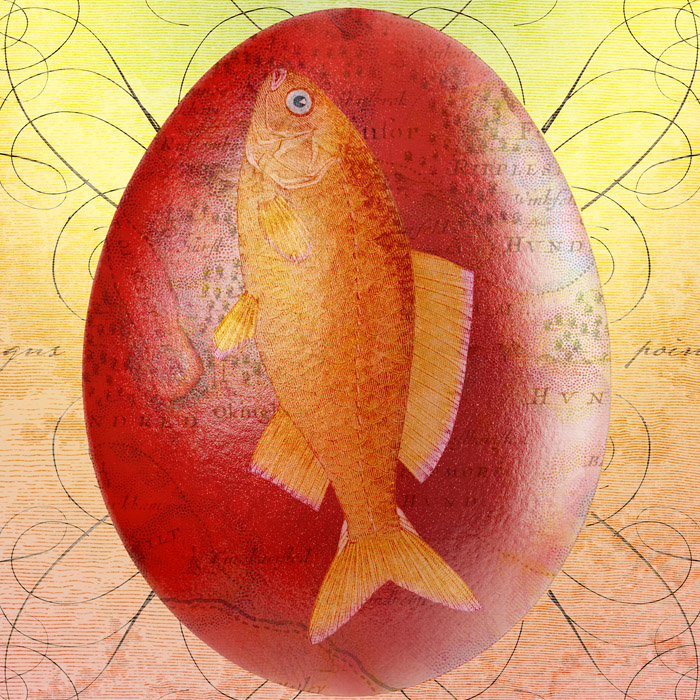I bumped into an old friend the other day who mentioned that he’d become interested in meditation and was looking at the nature of habitual thought patterns. That conversation inspired me to write a basic outline post about my experience with taming my own wild mind.
When you get a really good look at the ego—the swarm of thought forms that masquerades as a self here in this material world—it is easy to see why it’s called ‘the enemy within.’ It’s a mechanism gone unchecked for eons, and is quite capable of landing us in a deep well of suffering.
When I first understood that the thoughts going through my head were not mine, and furthermore didn’t necessarily have my best interests at heart, I was stunned by the implications. I’d been identifying all my life with something completely spurious.
As we begin to observe the maelstrom of conditioned thinking, it is so loud in the background of our minds that it feels out of control. With practice, though, and at first this practice is extremely clumsy and approximate, it quiets down a bit. It gets a little bit tamer.
In my experience, so far, it doesn’t actually go away. What happens instead is that our muscles of attention begin to develop. That’s our choice—where we place our attention. Attention is the magic wand in all of this. Whatever it touches, grows.
So learning to isolate the muscles of attention and pull the camera lens and microphones away from the constant internal chatter, the constant stream of thought, and bring them into the mentally silent present moment, becomes the task—the continual, never-ending task. This is what I call “coming out of thought,” over and over, all day long. It’s the same as mindfulness, but that word, to me, doesn’t really describe the process.
In the beginning, the muscles of attention are so atrophied that pulling them away from the internal chatter and into the silent safety of the present moment is like trying to stay awake when you’re completely and utterly exhausted. The draw of the thinking mind is so deeply addictive and seductive that we can barely resist it, much less wake ourselves up out of it.
The present moment feels empty, shabby, boring in comparison. It seems as though there’s nothing here. It feels flat and not the least bit as delicious as falling into the dramas and storylines of the thinking mind where there is color and sensation and emotional juiciness.
After continued practice, however, the present moment begins to have a draw of its own. At first the draw is that it’s a place of relief. It’s like a vacation from your mind. It’s like turning off the TV and shutting off your phone and just hearing the sounds of nature. The simplicity and lack of distraction, which at first felt like poverty, begin to reveal a quiet charm—subtle at first, but deepening with experience.
From this place of inner quiet, it’s possible to observe the nature of the human mind and question our beliefs and choices. It’s from here that you can get to a place where you sense the origin of a thought by how it feels. And eventually to a place where it seems as though no thoughts are actually true in the way we think they are. Truth doesn’t dwell at the level of human thought, although thought can light up the path.
At this point it begins to be possible to stop reacting against thought as though it is the enemy and you, its victim. Eventually it begins to seem likely that until this internal bully is seen as no threat, and is greeted with understanding, or even friendliness, it will continue to assert itself. What we resist persists.
When I say understanding, I don’t mean indulging the content of a thought. I don’t mean analyzing, or following along with it, or letting it get in the driver’s seat. I also don’t mean diving into the past to decipher its cause in an attempt to fix things—that, too, is one of those wild goose chases that the ego loves to involve us in. I mean just observing without commentary.
My favorite way to describe this is the Abraham Hicks buffet analogy.
In the buffet of the mind, there are many different offerings. Some may be so unappealing and even poisonous that we automatically know to steer clear of them. When they arise, we don’t need to do anything other than make a different choice. But if we begin to feel as though the yucky things shouldn’t be there, as though they are dangerous or threatening, or must be eradicated or purified, this makes the situation even stickier and harder to deal with. Resistance strengthens the very thing it aimed at eradicating, through the magic-wand effect of attention.
All resistance, no matter what is being resisted, seems to be part of the thought-swarm. All resistance, even against so-called evil, is itself the ego. Truth does not resist. It has no conditional judgment within it. Every aspect of reality is greeted with acceptance—with yes, instead of no.
Acceptance doesn’t mean that you have to taste everything in the buffet, or have anything to do with it whatsoever. It’s the opposite of being a victim. It’s a realization of the creative power of your own mind, of your own magic wand of attention, and its ability to influence external reality.
Here’s a quote I love from Byron Katie’s A Thousand Names for Joy: “Not believing your own thoughts, you’re free from the primal desire, the thought that reality should be different than it is.”
As soon as you stop fighting with the dream, you remember that you are the dreamer.
